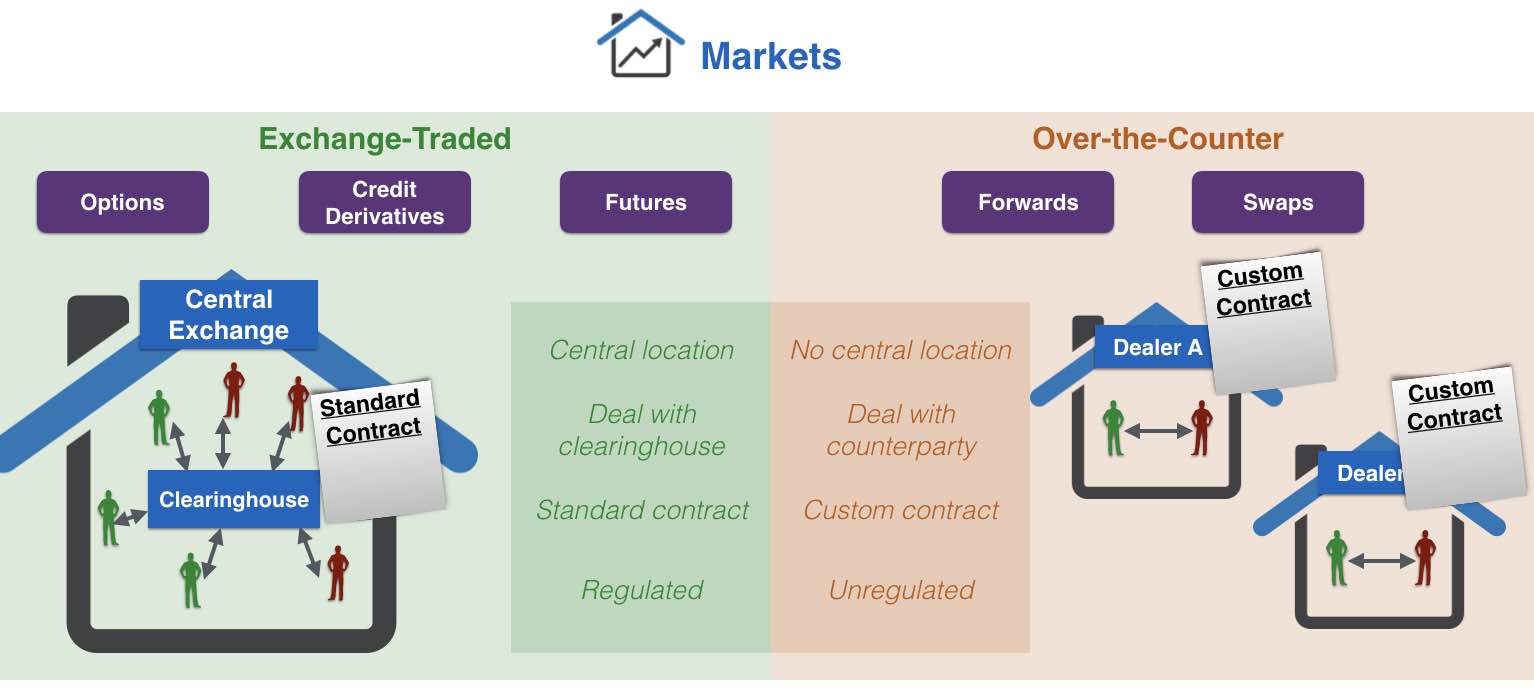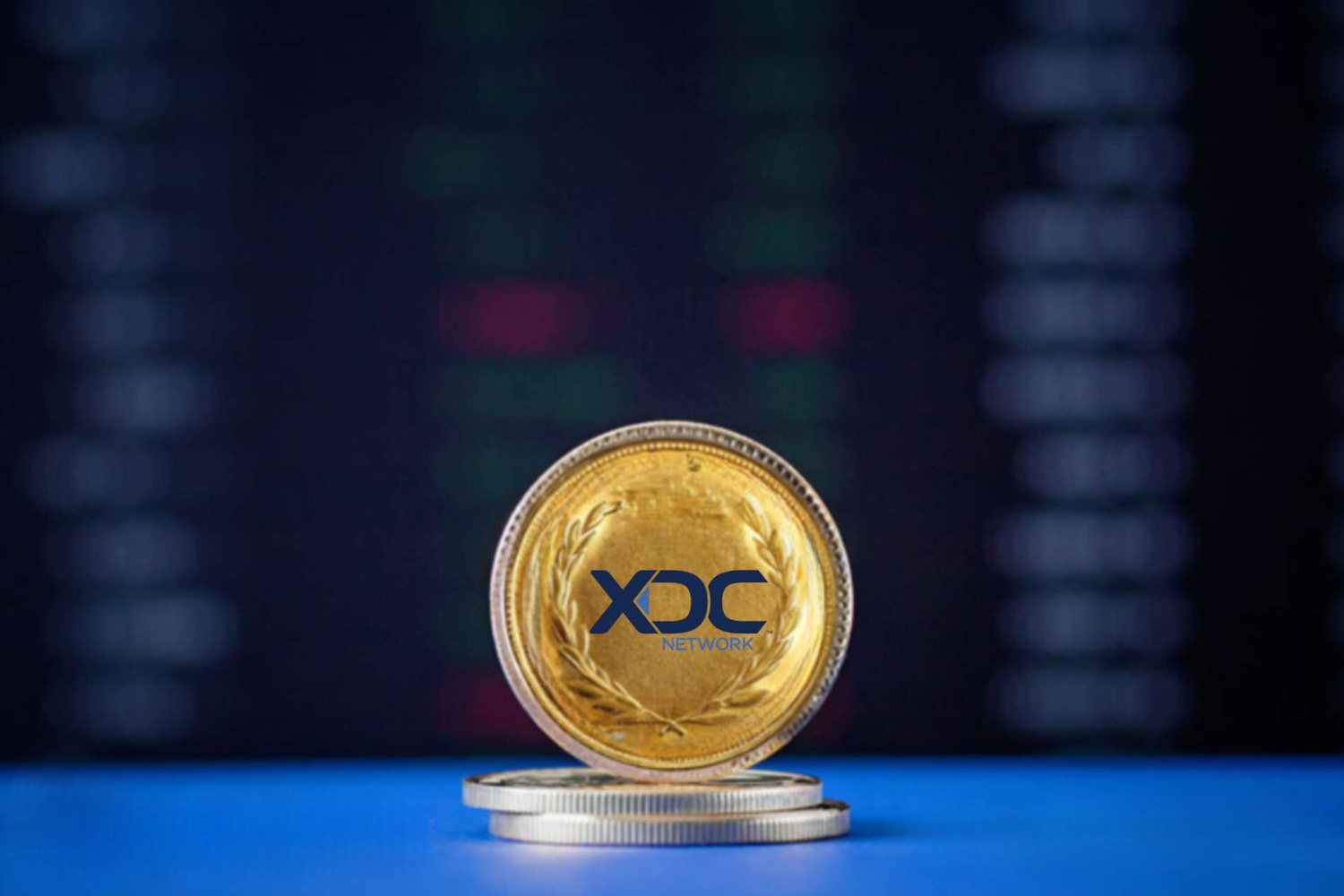Introduction
Welcome to the world of finance where different types of trading take place every day. One such trading method gaining popularity is Over The Counter (OTC) Trading. If you’ve heard the term before but aren’t quite sure what it means, you’re in the right place. In this article, we will provide a comprehensive overview of Over The Counter Trading.
OTC trading refers to the buying and selling of financial instruments, such as stocks, bonds, commodities, and derivatives, directly between two parties. Unlike traditional exchanges where transactions are facilitated through a centralized marketplace, OTC trading occurs through a network of dealers and brokers.
Due to its flexibility and accessibility, OTC trading has become an attractive option for both institutional investors and individual traders. In this method of trading, participants negotiate directly with each other, allowing for customized terms and pricing that may not be available on regulated exchanges.
OTC trading has been in existence for decades but has gained increased prominence in recent years with the emergence of online trading platforms and advancements in technology.
In the following sections, we will delve deeper into how Over The Counter Trading works, its benefits, drawbacks, popular methods, and why it holds such significance in the financial industry.
Definition of Over The Counter Trading
Over The Counter (OTC) trading, also known as off-exchange trading, is a method of buying and selling financial instruments directly between parties, without the involvement of a centralized exchange. In this type of trading, market participants trade privately and negotiate the terms of the transaction directly with each other.
Unlike traditional exchanges where transactions are conducted in a highly regulated and structured environment, OTC trading is decentralized and operates through a network of dealers, brokers, and market makers. This allows for more flexibility in terms of pricing, quantity, and timing of the trades.
OTC trading encompasses a wide range of financial instruments such as stocks, bonds, commodities, derivatives, and foreign currencies. It provides an alternative to the exchange-traded market, offering opportunities for investors to access assets that may not be listed on major exchanges.
Participants in OTC trading include institutional investors, individual traders, and even corporations seeking to manage their financial risk. They can trade directly with each other or through intermediaries such as broker-dealers who act as facilitators for the transactions.
One of the distinguishing features of OTC trading is the absence of a centralized marketplace. Instead, trading takes place through various communication channels, including telephone, electronic messaging systems, and online trading platforms. This allows for round-the-clock trading and global accessibility, enabling participants from different time zones and geographical locations to engage in transactions.
It is important to note that OTC trading is subject to certain regulations, although they are typically less strict than those imposed on exchange-traded markets. Regulatory bodies such as the Financial Conduct Authority (FCA) and the Securities and Exchange Commission (SEC) oversee OTC trading activities to ensure fair practices and market transparency.
In the next section, we will explore how Over The Counter Trading works and the key players involved in this method of trading.
How Does Over The Counter Trading Work?
Over The Counter (OTC) trading operates on a decentralized network where participants directly trade financial instruments with one another. Let’s take a closer look at how this method of trading works and the key players involved.
1. Market Participants: OTC trading involves a wide range of market participants, including institutional investors, individual traders, corporations, and market makers. These participants are connected through various communication channels such as electronic messaging systems, telephone, or online trading platforms.
2. Trade Execution: In OTC trading, buyers and sellers negotiate the terms of the trade directly with each other or through intermediaries such as broker-dealers. The negotiation involves agreeing on the price, quantity, and any other specific conditions of the trade.
3. Pricing: Unlike exchange-traded markets where prices are determined by supply and demand dynamics, OTC trading allows for more flexibility in pricing. Participants have the freedom to negotiate and agree upon a price that suits both parties involved in the trade. This flexibility can be advantageous for participants seeking customized terms or pricing that may not be available on traditional exchanges.
4. Transparency: While OTC trading offers flexibility, it is essential to note that it may involve a lower level of transparency compared to exchange-traded markets. Transactions are private and confidential, with limited public disclosure of trade details. However, regulatory authorities impose reporting requirements to ensure fair practices and market integrity.
5. Settlement: Once the trade is agreed upon, the settlement process begins. Settlement involves the transfer of assets and the exchange of payment between the buyer and seller. The exact settlement process may vary based on the financial instrument being traded and the jurisdiction in which the trade takes place.
6. Risks and Risk Management: OTC trading carries inherent risks, including counterparty risk, liquidity risk, and market risk. Counterparty risk refers to the risk of the other party defaulting on their obligations. Market participants mitigate these risks through various risk management strategies such as collateralization, netting agreements, and diversification of trading counterparties.
7. Regulation: OTC trading is subject to regulations imposed by regulatory authorities. While regulations vary from one jurisdiction to another, they aim to promote fair trading practices, market transparency, and investor protection.
Overall, OTC trading offers flexibility and accessibility for market participants, allowing them to engage in customized transactions outside the structure of traditional exchanges. However, it is crucial for participants to understand the risks involved and implement appropriate risk management strategies.
Advantages of Over The Counter Trading
Over The Counter (OTC) trading has gained popularity due to several advantages it offers to market participants. Let’s explore some of the key advantages of OTC trading:
1. Flexibility: One of the primary advantages of OTC trading is the flexibility it provides to market participants. Unlike traditional exchanges, OTC trading allows for customized terms and pricing. Participants have the freedom to negotiate and agree upon specific conditions that meet their individual needs. This flexibility can be particularly beneficial for institutional investors and corporations seeking tailored transactions.
2. Access to Unique Assets: OTC trading opens doors to a wide range of assets that may not be listed on traditional exchanges. Participants can trade financial instruments such as over-the-counter stocks, bonds, derivatives, and commodities. This allows investors to access unique investment opportunities and diversify their portfolios beyond the offerings of regulated exchanges.
3. Privacy and Confidentiality: OTC trading offers a higher level of privacy and confidentiality compared to exchange-traded markets. Transactions are conducted privately between parties, reducing the risk of sensitive information being exploited by competitors. This aspect can be particularly important for institutional investors and corporations who may have strategic reasons for keeping their trading activities confidential.
4. Market Accessibility: OTC trading provides increased market accessibility, enabling participants to engage in trading activities outside standard exchange hours. This means that participants can trade around the clock, regardless of time zones. Additionally, individuals from different geographical locations can connect and trade with one another, promoting global connectivity and liquidity.
5. Lower Costs: OTC trading can often be more cost-effective than trading on traditional exchanges. Participants can save on transaction costs as there may be fewer intermediaries involved in the trade execution process. Additionally, the absence of listing fees and regulatory compliance costs associated with traditional exchanges can contribute to overall cost savings.
6. Diverse Trading Strategies: OTC trading allows participants to employ diverse trading strategies that may not be possible on regulated exchanges. The flexibility in pricing and terms enables traders to implement complex trading strategies, such as arbitrage, hedging, and spread trading. This can provide opportunities for participants to maximize potential profits and manage their risk effectively.
7. Market Efficiency: OTC trading can contribute to market efficiency by facilitating faster trade execution and price discovery. Due to its decentralized nature, participants can quickly react to market conditions and negotiate trades directly. This can lead to more accurate pricing and efficient allocation of resources.
In summary, OTC trading offers flexibility, access to unique assets, privacy, market accessibility, cost savings, diverse trading strategies, and market efficiency. These advantages make OTC trading an appealing option for both institutional investors and individual traders seeking customized transactions and unique investment opportunities.
Disadvantages of Over The Counter Trading
While Over The Counter (OTC) trading has its advantages, it also comes with certain disadvantages that market participants should be aware of. Let’s explore some of the key disadvantages of OTC trading:
1. Limited Transparency: Compared to regulated exchanges, OTC trading generally offers a lower level of transparency. Transactions are conducted privately between parties, with limited public disclosure of trade details. This lack of transparency can make it challenging to assess the true market value of assets and may increase the risk of market manipulation.
2. Counterparty Risk: OTC trading involves a higher level of counterparty risk compared to trading on regulated exchanges. Participants bear the risk of the other party defaulting on their obligations, leading to potential financial losses. While risk can be mitigated through various risk management strategies, counterparty risk remains inherent to OTC trading.
3. Lack of Standardization: OTC trading lacks the standardization and regulations found in traditional exchanges. This can lead to variations in trade terms, pricing, and settlement processes. The absence of standardized contracts may make it more challenging to enforce agreements and resolve disputes, increasing the risk of misunderstandings or conflicts between parties.
4. Liquidity Concerns: Liquidity can be a significant concern in OTC trading, particularly for less frequently traded assets or markets. As OTC trades take place directly between parties, the availability of counterparties willing to trade may be limited, resulting in less liquidity. This can potentially lead to difficulty in executing trades at desired prices, larger bid-ask spreads, and increased transaction costs.
5. Regulatory Risks: While OTC trading is subject to certain regulations, the regulatory environment may be less strict compared to traditional exchanges. This can expose participants to increased regulatory risks, such as the risk of fraudulent activities or inadequate investor protections. It is important for participants to stay informed about the regulatory landscape and adhere to applicable rules and regulations.
6. Lack of Price Discovery: OTC trading may have limited price discovery mechanisms compared to exchange-traded markets. The absence of a centralized marketplace can make it challenging to assess the fair market value of assets, potentially leading to inefficiencies or less accurate pricing.
7. Complexity: OTC trading can be more complex and require a higher level of expertise compared to trading on regulated exchanges. Due to the customized nature of OTC trades, participants need to have in-depth knowledge of the financial instruments, pricing models, and risk management strategies. The complexity involved in OTC trading may deter less experienced traders or investors from participating.
Despite these disadvantages, OTC trading continues to be a popular choice for many market participants. However, it is crucial to carefully consider the risks involved and implement appropriate risk management strategies to navigate the challenges associated with OTC trading.
Popular Over The Counter Trading Methods
Over The Counter (OTC) trading encompasses a variety of methods for buying and selling financial instruments directly between parties. Let’s explore some of the popular OTC trading methods:
1. OTC Stocks: OTC stocks, also known as over-the-counter stocks, are shares of companies that are not listed on a major exchange. These stocks trade on decentralized platforms, such as the OTC Markets Group or Pink Sheets. OTC stocks provide opportunities for investors to access smaller companies or those with lower trading volumes, which may not be listed on traditional exchanges.
2. Fixed Income Market: The fixed income market in OTC trading involves the buying and selling of debt securities, such as bonds and treasury bills. Investors can trade these securities directly with other participants, bypassing traditional exchanges. OTC fixed income trading allows for customized terms and pricing, catering to the specific needs of market participants.
3. Foreign Exchange (Forex): Forex trading in the OTC market involves the exchange of one currency for another. Market participants, including banks, financial institutions, and individual traders, trade currencies directly with one another. The forex market is decentralized, operating 24 hours a day, allowing for continuous trading across different time zones.
4. OTC Derivatives: OTC derivatives are financial contracts whose value is derived from an underlying asset, such as commodities, currencies, interest rates, or equities. Examples of OTC derivatives include options, swaps, and forward contracts. OTC derivatives offer participants flexibility in terms of contract customization, enabling them to tailor the contracts to their specific risk management or investment objectives.
5. Commodities Trading: Commodities trading in the OTC market involves the buying and selling of physical goods, such as gold, oil, natural gas, and agricultural products. Participants can trade commodities directly with one another or through intermediaries. OTC commodities trading allows for customized contracts and pricing arrangements based on the specific requirements of both buyers and sellers.
6. Private Placements: Private placements are offerings of securities that are sold directly to a limited number of investors, typically institutions or high-net-worth individuals. Private placements in the OTC market provide companies with a fundraising avenue outside of public markets. Investors in private placements may have access to unique investment opportunities that are not available to the general public.
7. Crypto Trading: OTC trading also plays a significant role in the cryptocurrency market. OTC desks allow investors to buy or sell digital currencies directly with other participants, bypassing traditional cryptocurrency exchanges. Crypto OTC trading is particularly popular among institutional investors or high-volume traders looking for personalized and efficient trading services.
These are just a few examples of popular Over The Counter trading methods. The OTC market offers a wide range of opportunities for market participants to trade various financial instruments directly with one another, providing flexibility, customization, and access to unique assets.
Importance of Over The Counter Trading
Over The Counter (OTC) trading plays a vital role in the financial markets, offering several important benefits and serving various functions. Let’s explore the importance of OTC trading:
1. Accessibility to Unique Assets: OTC trading provides access to a wide range of unique assets that may not be readily available on traditional exchanges. This allows investors to diversify their portfolios and explore investment opportunities beyond the offerings of regulated markets. OTC trading enables participants to trade in specialized markets and access instruments tailored to their specific needs.
2. Customized Transactions: OTC trading allows for customized transactions, where participants have the freedom to negotiate and agree upon specific terms and pricing. This flexibility is particularly appealing to institutional investors, corporations, and high-net-worth individuals who require tailored solutions to match their unique investment objectives or risk management strategies.
3. Flexibility in Pricing: Unlike regulated exchanges where prices are determined by supply and demand, OTC trading offers more flexibility in pricing. Participants can negotiate the price directly with their counterparties, allowing for potentially better pricing and more competitive spreads. This flexibility can be advantageous, especially in markets with less liquidity or for illiquid assets.
4. Market Efficiency: OTC trading contributes to market efficiency by providing a platform for faster trade execution and price discovery. By enabling participants to directly engage with one another, OTC trading can result in more accurate pricing and efficient allocation of resources. This efficiency benefits both buyers and sellers by reducing transaction costs and facilitating timely access to liquidity.
5. Risk Management: OTC trading serves as a crucial tool for managing financial risk. Participants can utilize OTC derivatives, such as options and swaps, to hedge against price fluctuations or to mitigate specific risks associated with their portfolios. OTC trading allows for tailoring contracts to match participants’ risk appetite and specific risk management needs, helping them protect investments and navigate uncertain market conditions.
6. Liquidity Provision: OTC trading contributes to overall market liquidity by providing an alternative avenue for market participants to buy and sell financial instruments. It enhances market depth, especially in markets with lower trading volumes or less frequently traded assets. OTC market makers and liquidity providers play a crucial role in ensuring adequate liquidity and facilitating smooth trading activities.
7. Global Connectivity: OTC trading enables participants from different time zones and geographical locations to connect and trade with one another. This global connectivity fosters international trade and investment, offering opportunities for market participants to diversify and access markets beyond their local boundaries. The decentralization of OTC trading allows for continuous trading across different time zones, ensuring 24/7 market accessibility.
The importance of OTC trading lies in its ability to provide participants with access to unique assets, customized transactions, flexibility in pricing, market efficiency, risk management tools, liquidity provision, and global connectivity. These factors contribute to the vibrancy and diversity of the financial markets, allowing participants to tailor their investment strategies and effectively manage their financial needs.
Conclusion
Over The Counter (OTC) trading offers a decentralized and flexible approach to buying and selling financial instruments directly between market participants. Throughout this article, we have explored the definition, working mechanisms, advantages, disadvantages, popular methods, and importance of OTC trading.
OTC trading provides numerous benefits, including flexibility in terms of pricing and transaction customization, accessibility to unique assets, privacy and confidentiality, lower costs, and the ability to implement diverse trading strategies. It plays a vital role in the financial markets by providing participants with opportunities to access specialized markets, tailor transactions to their specific needs, and manage financial risk effectively.
However, OTC trading also comes with certain challenges, such as limited transparency, counterparty risk, lack of standardization, liquidity concerns, and regulatory risks. It is essential for participants to understand these risks and implement appropriate risk management strategies to navigate the complexities of OTC trading.
Nevertheless, the importance of OTC trading cannot be understated. It contributes to market efficiency by facilitating faster trade execution and price discovery. It enables participants to access unique assets and diversify their portfolios beyond traditional exchanges. It provides market participants with the flexibility and customization they need to pursue their investment objectives and manage financial risk. OTC trading also fosters global connectivity, allowing participants from different regions and time zones to engage in trading activities.
In summary, OTC trading has revolutionized the financial markets, providing participants with alternative avenues for trading and investment. Its flexibility, accessibility, and customization options have made it a popular choice for institutional investors, corporations, and individual traders. However, it is important for market participants to understand and manage the risks associated with OTC trading to ensure the smooth and efficient operation of this method of trading.

























